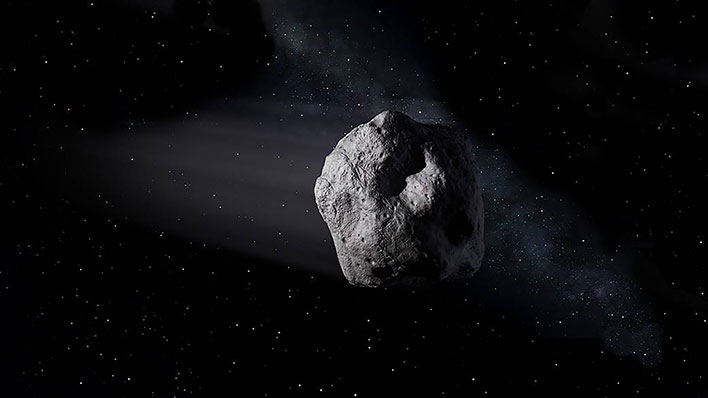Watch This Potentially Hazardous Asteroid Brush Past Earth Today

A scene from the 90’s classics Armageddon or Deep Impact is unlikely to happen in real life any time soon (thankfully since we don't have the tech to save Earth from a doomsday event). Nevertheless, a handful of rather big asteroids have zipped by the Earth this past week. One of these large asteroids will be especially visible tonight. Here is how you can watch the “potentially hazardous” asteroid 1999 VF22 sail past Earth.
Asteroid 1999 VF22 was first discovered by the Catalina Sky Survey in 1999. The Catalina Sky Survey is based near Tucson, Arizona and its purpose is to “catalog at least 90 percent of the estimated population of [near Earth objects] larger than 140 meters.” The hope is to classify and study any near Earth objects (NEOs) that could potentially pose a threat to our planet. Asteroid 1999 VF22 will most likely not harm our planet, but many of these asteroids are labeled as “potentially hazardous” in case their trajectory unexpectedly alters.
The asteroid is approximately 1,017 feet (310 meters) in diameter and therefore roughly the size of a cruise ship. It orbits the sun every one and half years. The asteroid will be 3.3 million miles (5.4 million km) from Earth today, which is the closest it has been to our planet in a century. It is believed that the asteroid will come a tad closer to Earth on February 23, 2150 or 128 years from now.
Asteroid 1999 VF22 was first discovered by the Catalina Sky Survey in 1999. The Catalina Sky Survey is based near Tucson, Arizona and its purpose is to “catalog at least 90 percent of the estimated population of [near Earth objects] larger than 140 meters.” The hope is to classify and study any near Earth objects (NEOs) that could potentially pose a threat to our planet. Asteroid 1999 VF22 will most likely not harm our planet, but many of these asteroids are labeled as “potentially hazardous” in case their trajectory unexpectedly alters.
The asteroid is approximately 1,017 feet (310 meters) in diameter and therefore roughly the size of a cruise ship. It orbits the sun every one and half years. The asteroid will be 3.3 million miles (5.4 million km) from Earth today, which is the closest it has been to our planet in a century. It is believed that the asteroid will come a tad closer to Earth on February 23, 2150 or 128 years from now.
The Virtual Telescope Project 2.0 will also stream the passage of another potentially hazardous asteroid in less than two weeks. Asteroid 2001 CB21 will be roughly 3 million miles (4.9 million km) from the Earth on March 4th. This particular asteroid orbits the sun very quickly at roughly 27,000 mph (~43,000 kmph). For reference, the Earth’s orbital speed is 67,000 mph (107,000 kmph). Like asteroid 1999 VF22, NASA assures us that it is improbable that asteroid 2001 CB21 will come any nearer to the Earth’s surface any time soon.
Artist depiction of asteroid courtesy of NASA
Artist depiction of asteroid courtesy of NASA

